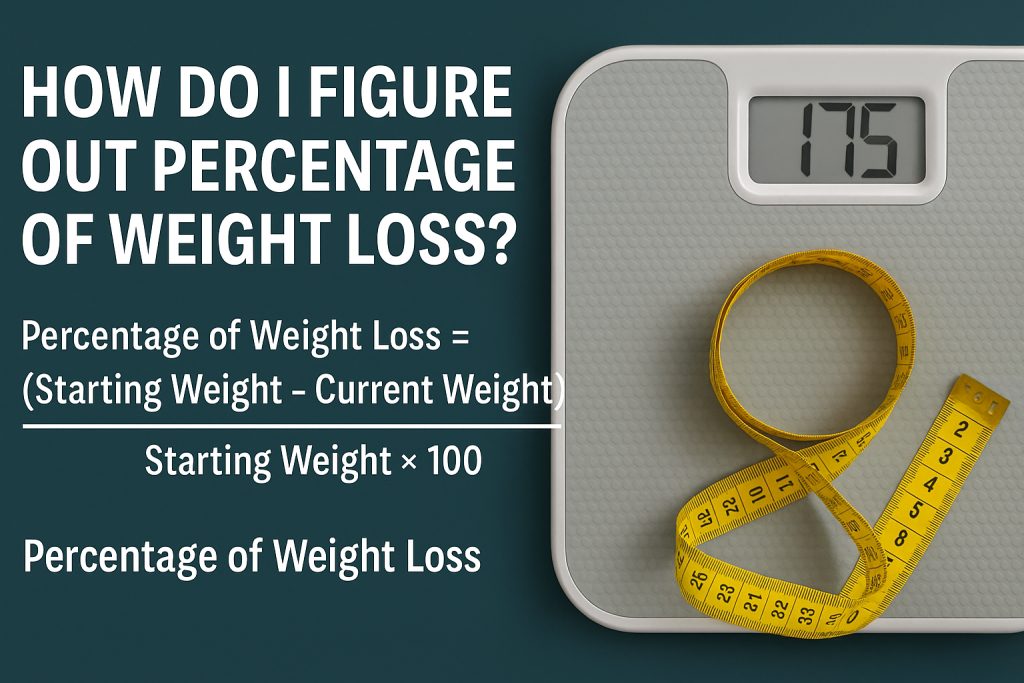Tracking your weight loss journey is an essential part of achieving your health goals. One of the most effective ways to measure your progress is by calculating the percentage of weight loss. This metric gives you a clear, easy-to-understand picture of how much weight you’ve lost in relation to your starting point. In this comprehensive guide, we’ll show you how to figure out your percentage of weight loss step by step, with explanations, formulas, examples, and tips to help you stay motivated and on track.
Why Calculate the Percentage of Weight Loss?
Understanding the percentage of weight loss offers several significant benefits:
- Standardizes Progress: Percentages make it easy to compare results, regardless of your starting weight.
- Motivation Booster: Seeing measurable progress as a percentage can inspire you to stick with your program.
- Health Milestones: Certain weight loss percentages are associated with notable health benefits, such as improved blood pressure or reduced diabetes risk.
- Medical Guidelines: Doctors often use weight loss percentages to set goals or evaluate interventions.
What Is the Formula for Calculating Percentage of Weight Loss?
The formula to calculate the percentage of weight loss is simple and straightforward:
Formula:
Percentage of Weight Loss = ((Starting Weight – Current Weight) / Starting Weight) × 100
This formula tells you what portion of your original weight you have lost, expressed as a percentage.
Breaking Down the Formula
- Starting Weight: Your weight at the beginning of your weight loss journey.
- Current Weight: Your weight at the time you are calculating.
- Difference: Subtract your current weight from your starting weight to find the total pounds or kilograms lost.
- Divide: Divide the difference by your starting weight to get a decimal.
- Convert to Percentage: Multiply by 100 to turn the decimal into a percentage.
Step-by-Step Guide: How to Calculate Weight Loss Percentage
- Weigh Yourself: Record your starting weight at the beginning of your program.
- Track Progress: Regularly weigh yourself using a reliable scale at the same time of day each time.
- Apply the Formula: Plug your numbers into the formula:
Example Calculation
Suppose your starting weight was 200 pounds and your current weight is 175 pounds.
- Weight lost = 200 – 175 = 25 pounds
- 25 / 200 = 0.125
- 0.125 × 100 = 12.5%
Result: You have lost 12.5% of your starting weight.
Using Kilograms or Stones
The formula works exactly the same, regardless of the measurement unit. Just make sure both weights are in the same unit!
- If your starting weight is 90 kg and your current weight is 81 kg:
- 90 – 81 = 9 kg lost
- 9 / 90 = 0.1
- 0.1 × 100 = 10%
Handy Weight Loss Percentage Calculator
If you want to avoid manual calculations, there are many free online weight loss percentage calculators available. Simply enter your starting and current weights, and the tool will provide the percentage instantly.
Understanding Your Weight Loss Percentage
What does your percentage mean in terms of health?
- 5% Weight Loss: Even a 5% loss can significantly improve health indicators, such as blood pressure, cholesterol, and blood sugar.
- 10% Weight Loss: Associated with substantial health benefits and often used as a clinical target.
- 15% or More: Greater reductions in risk for obesity-related conditions, but goals should be personalized.
Tips for Accurately Measuring and Tracking Weight Loss
1. Use a Reliable Scale
Invest in a high-quality, calibrated scale for consistent results. Always weigh yourself on the same scale if possible.
2. Weigh at the Same Time
Your weight can fluctuate throughout the day. For best accuracy, weigh yourself first thing in the morning before eating or drinking.
3. Wear Consistent Clothing
Clothing adds extra weight. Weigh yourself with minimal or similar clothing each time.
4. Log Your Data
Maintain a written or digital record of weights and dates to see your trends over time.
5. Don’t Obsess Over Daily Fluctuations
Normal shifts in water retention, salt intake, or hormonal changes can cause your weight to temporarily increase or decrease. Focus on long-term trends for a clearer picture.
Common Mistakes to Avoid When Calculating Weight Loss Percentage
- Mixing Units: Always use the same unit for both your starting and current weight (pounds, kilograms, or stones).
- Incorrect Starting Weight: Make sure your starting weight is accurate—the first weight you recorded before any weight loss began.
- Forgetting to Convert to Percentage: Don’t forget to multiply by 100 at the end!
Frequently Asked Questions
1. Is percentage of weight loss the best way to track progress?
It is a very effective method, especially for comparing results between individuals of different body sizes. However, also pay attention to other metrics like body fat percentage, waist circumference, or how your clothes fit.
2. How often should I calculate my weight loss percentage?
Weekly or biweekly calculations are ideal for tracking, as daily fluctuations can be misleading.
3. What percentage of weight loss is considered healthy per week?
Safe and sustainable weight loss is typically 0.5-2 pounds (0.23-0.9 kg) per week, or about 1% of total body weight.
Conclusion: Start Tracking Your Success
Calculating your percentage of weight loss is an empowering way to visualize your progress and stay motivated on your health journey. By following the simple formula and tips in this guide, you can accurately track your results, celebrate your milestones, and make informed decisions about your health goals. Remember, every percentage counts towards a healthier you!


